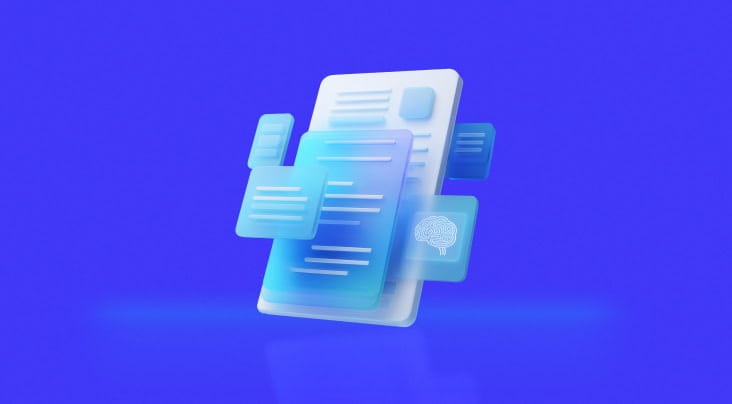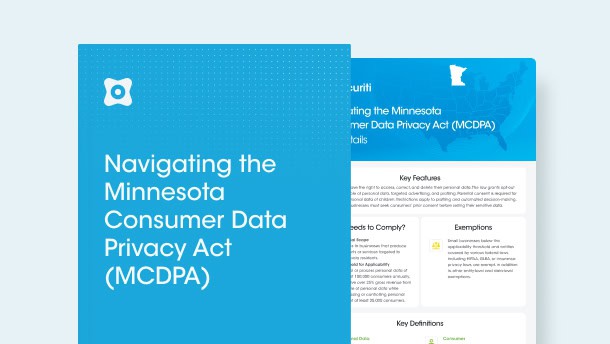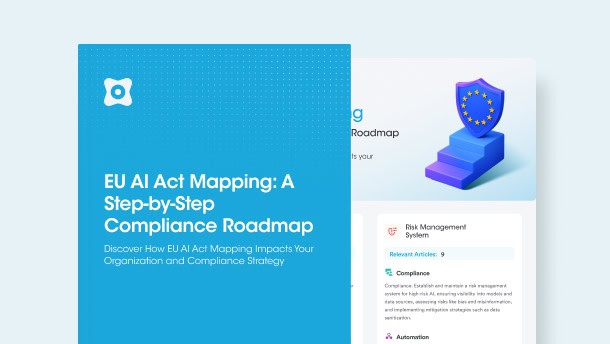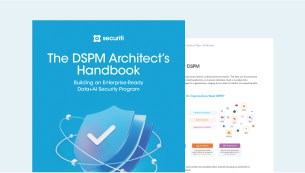Generative AI (GenAI) is nothing short of a technological wonder, and its impact is poised to echo for years to come. McKinsey estimates that by 2030, AI will contribute a whopping $4.4 trillion annually to the global economy.
AI's myriad benefits have led executives and decision-makers to rush toward its adoption and integration into their workflows for increased growth, productivity, and innovation. One popular GenAI tool that enterprises are eager to embrace is Copilot for Microsoft 365.
Before adopting it headfirst, enterprises must evaluate whether they are copilot-ready. Ensuring readiness isn’t just about asking, “Are we ready for copilot?” Microsoft 365 Copilot readiness demands a robust data environment built upon an effective data management and data governance strategy.
Read on to learn more about Microsoft Copilot readiness assessment, its necessity, and the best practices checklist organizations must follow for a safe rollout.
What is Microsoft 365 Copilot Readiness Assessment & Why It’s Important?
Discussing what readiness means is imperative to understand the necessity of copilot readiness assessment. In information technology, readiness means evaluating an organization's capability to safely adopt and integrate a system or application into its operations. On the same account, copilot readiness signifies how well-equipped an organization is to securely and effectively benefit from the potential value of Microsoft 365 Copilot.
Copilot readiness assessments are crucial to help enterprises:
- Evaluate the areas where the company has strong foundations or gaps. For instance, an enterprise may already have a strong infrastructure, so it requires little to no focus on that front. However, if it has potential gaps in its data governance, quality, or labeling, it requires a comprehensive strategy, policies, and controls around its data environment.
- Identify potential challenges that hinder smooth copilot integration. For instance, data silos and sprawl remain a significant challenge for organizations, resulting in limited visibility and accessibility to quality data. On the security front, the excessive volume of sensitive or regulated data in shadow datasets also poses significant data security risks, leading to unauthorized exposure and compliance violations.
When it comes to copilot readiness, organizations must think beyond access to the right tools or a dynamic, scalable infrastructure. While these components are important, Copilot demands an effectively managed, sterilized data ecosystem, i.e., Microsoft tenant. Adoption could be delayed if Microsoft's workspace, like the Sharepoint environment, lacks governance and security guardrails. In fact, data governance experts cited data governance as a top concern among major enterprises, leading them to ground Microsoft Copilot adoption. A similar survey by Gartner reports that while 60% of IT leaders pilot copilots, only 6% cite finishing it or moving to large-scale deployments. The report further cited governance and security concerns as top factors impacting copilot deployments.
Risks of Deploying Copilot without Readiness Assessments
From $365,000 cautionary tales to $62 million reality checks, tech headlines brim with the dangers of jumping into AI adoption without ensuring readiness. Deploying Copilot without knowing where sensitive data is, mitigating the bias/inaccuracy it contains, or ensuring entitlements it ought to preserve while moving to AI pipelines can lead organizations to significant risks.
- Unintended Data Access: In cloud environments, over 40,000 different permissions are granted to identities, 50% of which are high-risk. Secondly, over a billion combinations make managing permissions a daunting task. Hence, teams often grant broader access to entire groups, ultimately leading to overexposed sensitive data.
- Third-party App Exposure: Copilot for Microsoft 365 offers dynamic integration with third-party applications for improved contextual topic understanding and analysis. However, without proper guardrails, sensitive data may likely leave the secure boundary of the Microsoft environment.
- Data Exfiltration: There’s also a high chance that sensitive data in Copilot response or output may get leaked in a breach.
- Compliance Violations: Due to risky permissions or unintended data access, employees are highly likely to access each other’s or any customer’s personal data. This is a serious risk that may expose organizations to regulatory fines.
Top Benefits of Microsoft 365 Copilot Readiness Assessments
Efficient Rollout
Time to market or deployment is critical to business dominance, allowing for an increased competitive edge, an established business reputation, and enhanced market adaptability. Readiness assessments give organizations visibility into gaps in their data governance and security strategy. Organizations cannot rush rollout without addressing these blockers, which may introduce newer risks during or after deployment. Hence, as security and governance teams bridge those gaps, the likelihood of a successful copilot deployment increases significantly.
Minimized Copilot Deployment Risks
Many organizations' data environments are far from clean. They suffer from weak data governance and security, which results in inconsistent data quality and growing security risks. With the introduction of Copilot, these risks or concerns have been amplified. Readiness assessments allow security and governance teams to identify and evaluate those risks. By clearly identifying the concerns, organizations can develop efficient mitigation strategies, governance controls, and compliance policies.
Optimized Business Operations
Three out of four C-suite executives believe that their business might not be able to withstand the competition if they fail to scale their AI initiatives in the coming five years. The rate at which data is growing has multiplied with the introduction of GenAI tools like copilots. This has not only affected security and compliance challenges but also greatly impacted businesses’ data management processes. With effective assessments, businesses can better optimize their operations by establishing robust data management and lifecycle frameworks.
Common Challenges That Impede Microsoft Copilot Readiness
To become copilot-ready, organizations must recognize the obstacles hindering its adoption and develop a plan of action accordingly.
Lack of Data Visibility
GenAI applications require access to large and diverse datasets for training, recognizing patterns, and making efficient decisions. However, for Microsoft Copilot to make informed decisions, the data must be clean, authorized, and validated. This is easier said than done since organizations with petabyte-scale data don’t know where their sensitive data reside, who has access to it, and how it is accessed. This lack of visibility considerably hampers an organization’s ability to identify and address risks effectively.
Data Quality Issues
Organizations generate or hold volumes of data throughout the year. However, not all data is useful or relevant to business operations. This poor quality and over-retained data is not only harmful to the Copilot responses but also poses a serious threat to compliance. Organizations tend to struggle with managing and reducing ROT data often due to ineffective data classification and labeling processes.
Balancing Security with Productivity
Business teams need data fast to make swift decisions and stay ahead of the competition. Yet, security teams are concerned about risks associated with GenAI tools and applications, particularly threats like data exfiltration, data poisoning, phishing, etc. Consequently, 50% of security leaders struggle to bridge the gap between security and productivity.
5 Important Steps to Consider for Copilot for Microsoft 365 Readiness Assessment
Readiness assessments involve several critical steps to help organizations become AI-ready. However, from the data security and governance point of view, the following are some critical steps that organizations must consider.
Identify Risky Permissions
Overpermissioning or unintended entitlements are among the most critical risks that could potentially expose sensitive data to unintended users. To discover these risks, organizations must implement a systematic detection program. Organizations can gain insights into the files or data context, sensitivity, permissions, and applicable regulations using a graph rules-based approach. These insights can help organizations detect users' and groups' permissions to specific files and folders. With added metadata context, governance teams can further identify entitlements and reduce excessive permissions.
Evaluate Data Environment Security Posture
Organizations must have complete visibility into their sensitive data to ensure a well-protected and governed data environment. Data security posture management helps organizations understand where their sensitive data is located, who can access it, and how it is used. It also gives insights into security misconfigurations across the data environment, such as overly permissive access, publicly exposed sensitive data, misclassified sensitive data, inconsistent retention policies, or unmonitored privilege access.
Assess Sensitive Data Risks
After identifying misconfigurations in the data environment, organizations must assess the risks that could expose sensitive data to copilot users. Leverage data classification to accurately identify regulated or sensitive data elements across the environment. Analyze the security configuration of the data environment to flag sensitive data shared openly or at risk of being overexposed. Furthermore, security teams can efficiently prioritize sensitive data using out-of-the-box risky-combination rules, preventing over-permissioned or exposed files at scale.
Check Sensitivity Labels
Is your data labeled appropriately and accurately across your Microsoft Sharepoint environment? Microsoft’s native tools lack accurate labeling of petabyte-scale data. Hence, data teams must ensure effective labeling is applied throughout the data landscape. Implement labeling by categorizing data based on file type, age, location, or applicable regulation. Labeling helps organizations instruct copilots to avoid accessing files with sensitive labeling. This way, organizations can focus more time on working with data while cleaning their Sharepoint environment in parallel.
Uncover ROT Data
Trivial or outdated data can hamper copilot responses, risking customer trust and business reputation. Leverage a graph rules-based approach to understand the relationship between data and identify duplicate or near-duplicate data based on attributes like ownership, file age, access, usage, or content. Data teams can further apply labeling to exclude identified ROT data from Copilot responses.
Preparing for a Future with a Secure Microsoft Copilot Adoption
Securiti for Copilot helps organizations fast-track their copilot adoption by leveraging contextual data+AI intelligence and automated controls. Leverage Securiti Data+AI Command Center to prevent unintended sharing of sensitive data using risk intelligence and automated remediation controls. With a graph rules-based approach, Securiti helps data teams to accurately detect duplicate, near-duplicate, obsolete, and trivial data, helping organizations improve the quality of their copilot responses.
Request a demo to discover how you can fast-track Copilot adoption.
Frequently Asked Questions








































